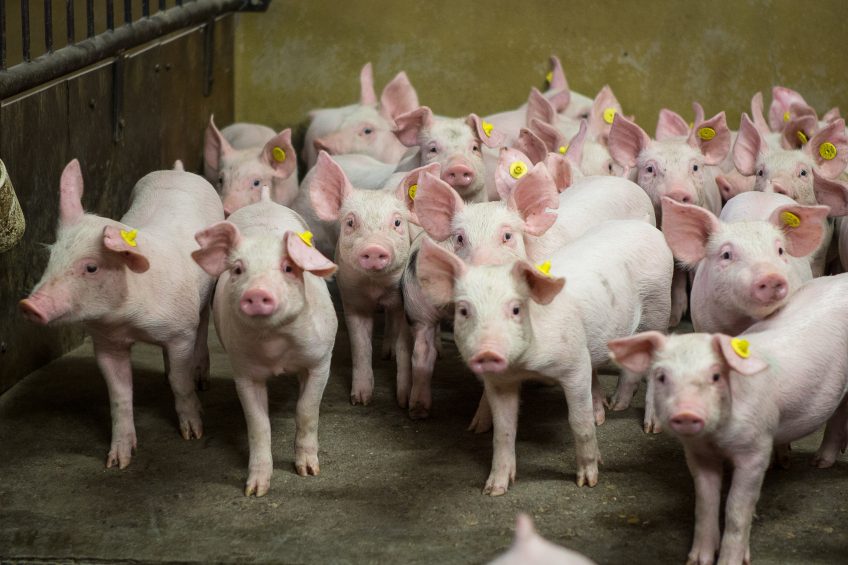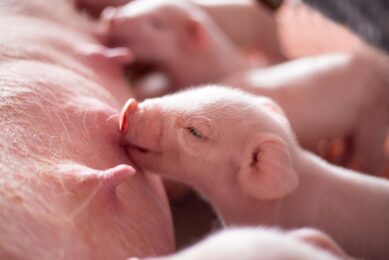Mixing weaners without tears

Mixing weaners has always been a bit of a problem and is likely to become a bigger problem in the European Union, now zinc oxide appears to become banned soon. There are a few ways to reduce stress around weaning as much as possible, explains management expert John Gadd.
It must be nearly 20 years now since I started this column series in Pig Progress about the hidden corners of pig production. In those 20 years, you may well feel that after finding as many as 200 subjects worth mentioning, that I must think the many pig textbooks I have bought or consulted have much to answer for. Not so, they are a marvellous source of information. What I have noticed is that they have tended to be ‘light’ about the practical application of their technical findings.
Mixing weaners
Because of the anxieties about more post-weaning difficulties due to the current restrictions on antibiotic use and the coming ban on high level zinc oxide, I’ve been looking at what the producer and his workers can do to lessen the threat in their absence. Last month I suggested increased post-weaning stress was one area we should address.
Mixing litters into the nursery is stressful for them and to do it well is insufficiently covered in most textbooks. Years ago we had a lot of post-weaning aggression on David Taylor’s Taymix farm, with 1,750 litters to wean annually, until we learned how to manage it.
Since then I have been involved with mixing together small pigs on hundreds of farms across the world. In fact, these ‘call-outs’ have been one of my most enjoyable tasks as it has not been too difficult to get results.
So here, for what they are worth, are some of the practical measures the textbooks don’t seem to cover.
A brief checklist
• Allow sufficient space for submissives to avoid dominants and for the dominants in each group to get their challenges over with minimal disruption. There are well-published spatial allowances under welfare constraints but I find 15% more to be helpful.
• For several years now research has suggested that a not too-even spread of weight within the litters (about 8% difference lightest to heaviest) gets the peck-order fighting over soonest. This mantra is probably superseded by ‘co-mingling’ litters just before weaning, and if this is not practicable, then after it, by housing the two and at the most three litters in the plastic strip-fronted boxes for a few days.
• Introducing litters just before dusk helps, possibly by late afternoon.
• For units with a continual problem, spraying with an aerosol lavatory freshener has helped.
• If using bedding, re-bed amply just before mixing.
• Place some of the to-be-mixed pigs’ faeces (don’t overdo it as we did) in the intended voiding area. Just-mixed pigs are confused for a few hours, dung in the wrong place and their movements obstruct one another, prolonging scrapping.
• Over the years in typical intensive units, small groups (less than 20) mix better than large ones, but with the advent of much larger farms, more space, the use of co-mingling and more skilled supervision, this advice could be outdated. One day the textbooks will tell us why.
• Getting two or more litter groups to ‘rub together’ in the first night is important. Pigs have a 20 times better sense of smell than us, so getting them warm and cosy in close proximity to each other in those plastic strip covers works well.
• Check drinker flow and adequacy. I have a feeling that drinking is akin to ‘comfort feeding’ in us humans when stressed. I have had surprisingly good success in encouraging quick feed intake for two or three days after weaning by buying a few turkey drinkers – cone-shaped over a circular trough, suspended by a chain. The gentle swinging motion and the ripple of water flowing down to the trough attracts consumption from those shy of a nipple drinker. But hang them over a well-drained area, and chain the base to a slat or wire floor as they will nudge and spill the things. Try one and see? Maybe a best idea for neonates which are slow to drink. Alternatively, put in a steel canister cube drinker, filled by up-ending it. On replacement the right way up, gravity and suction does the rest.
• Adequate water intake post-weaning is very important. If you pay for a modern well-designed and manufactured post-weaning ‘link-feed’, they need to eat as much of it as soon as they can. Gone are the days when they upset their digestion. But these new feeds need ample water intake.
• Provide an extra feed hopper for a day or two to augment the permanent one, this helps the submissives.
• Above all: observe, observe, observe – and act on what you notice.











